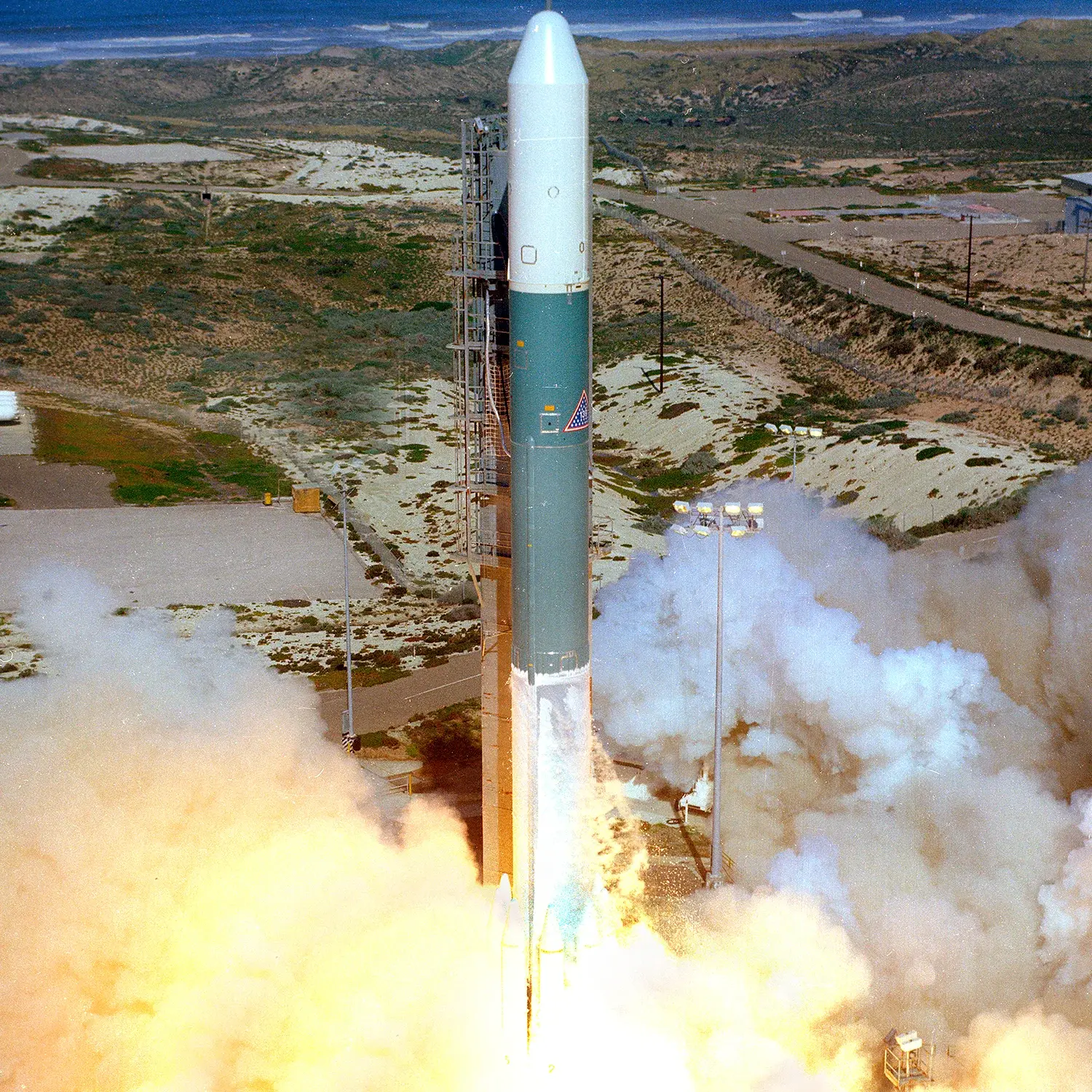Nimbus 7 & CAMEO
Launch Success
Liftoff Time (GMT)
08:14:00
Tuesday October 24, 1978
Mission Details
Nimbus 7
Nimbus 7 (also called Nimbus G) was a meteorological satellite. It was the seventh and final satellite of the Nimbus program. The spacecraft functioned nominally until 1994. The satellite served as a stabilized, earth-oriented platform for the testing of advanced systems for sensing and collecting data in the pollution, oceanographic and meteorological disciplines. The polar-orbiting spacecraft consisted of three major structures: a hollow torus-shaped sensor mount, solar paddles, and a control housing unit that was connected to the sensor mount by a tripod truss structure. Configured somewhat like an ocean buoy, Nimbus 7 was nearly 3.04 metres (10.0 ft) tall, 1.52 metres (5.0 ft) in diameter at the base, and about 3.96 metres (13.0 ft) wide with solar paddles extended. The sensor mount that formed the satellite base housed the electronics equipment and battery modules. The lower surface of the torus provided mounting space for sensors and antennas. A box-beam structure mounted within the center of the torus provided support for the larger sensor experiments. Mounted on the control housing unit, which was located on top of the spacecraft, were sun sensors, horizon scanners, and a command antenna. The spacecraft's spin axis was pointed at the Earth. An advanced attitude-control system permitted the spacecraft's orientation to be controlled to within plus or minus 1 deg in all three axes (pitch, roll, and yaw). 8 experiments were selected: 1) Coastal-Zone Color Scanner (CZCS) 2) Earth Radiation Budget (ERB) 3) Limb Infrared Monitoring of the Stratosphere (LIMS) 4) Scanning Multichannel Microwave Radiometer (SMMR) 5) Solar Backscatter UV and Total Ozone Mapping Spectrometer (SBUV/TOMS) 6) Stratospheric Aerosol Measurement II (SAM II) 7) Stratospheric and Mesospheric Sounder (SAMS) 8) Temperature-Humidity Infrared Radiometer (THIR) These sensors were capable of observing several parameters at and below the mesospheric levels.
Low Earth Orbit
1 Payload
965 kilograms
CAMEO
CAMEO (Chemically Active Material Ejected in Orbit) was a piggyback experiment included in the Nimbus-7 launch by the Goddard Space Flight Center. The primary objective of the investigation was to study the magnetosphere-ionosphere interactions by observing the dynamics of neutral (barium) and ion (lithium) clouds released at orbital velocities near the Earth. It had a mass of approximately 89 kg and consisted basically of batteries, of one lithium and four barium gas canisters. The CAMEO unit remained attached to the second stage of the Delta vehicle. This was the first opportunity to observe the behavior of conventional barium release when conducted at orbital velocity in the near-earth magnetic field.
Low Earth Orbit
1 Payload
89 kilograms
Rocket

Launch Site
Stats
Delta 2000 Series
40th
Mission
7th
Mission of 1978
1978
102nd
Orbital launch attempt
